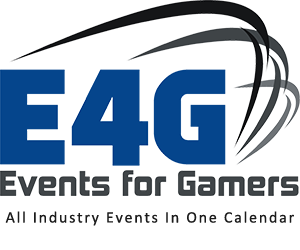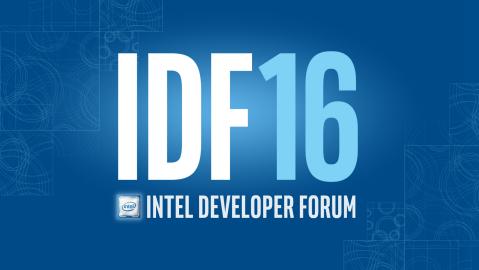The Intel Developer Forum 2016 (IDF) recently took place in San Francisco before an audience of 6,000 attendees from all walks of technological life. A few major innovations relevant to gamers and game developers emerged from the annual developers showcase for the Intel ecosystem. Here are a few of the key takeaways from IDF we found to be of interest.
Taking the Wires out of VR
The biggest announcement at this year’s IDF could (eventually) affect gamers more than most of the news highlighted within and around Intel’s ecosystems. That news is Project Alloy, introduced during the leading keynote by Intel CEO Brian Krzanich.
Project Alloy is a first-generation, all-in-one “merged reality” head-mounted display, presented without the peskiness of wires or the user being locked into a headset without seeing the surrounding environment. There’s evident potential for game developers — if Alloy comes through as packaged — of being able to plug into augmented reality, virtual reality and environmental sensing through computer vision, all at once.
The Alloy device is designed not to be reliant on external sensors or cameras and can enable movement along six degrees of freedom as well as enable developers and users to manipulate their hands, for example, in the virtual experience. These teasers about one possible future of VR are due to the integration of the company’s own RealSense camera technology within the headset.

Interestingly, rather than calling the new platform virtual reality, augmented reality or mixed reality, the term “merged reality” was coined and attached to Alloy. It’s important to note that part of the title is “Project,” so a lot of core details remain to be decided, such as release date or pricing. Loosely emulating Razer’s Open Source Virtual Reality (OSVR) model, Intel discussed opening the Alloy hardware and providing open APIs in 2017 for developers and partners to create their own Alloy-based hardware.
With many questions about Alloy hanging in the air, the next several months will hopefully reveal the direction of this project and how it will manifest.
Microsoft and Intel Partner on VR and AR Standards
This is an easy segue, because this is a continuation of the IDF keynote narrative about VR and AR. Microsoft, as the creator of the similar see-through AR head-mounted display HoloLens, is sharing similar space with Intel, especially in light of its Project Alloy platform announcements.
Terry Myerson, executive vice president of the Windows and Devices Group at Microsoft, shared stage time with Intel’s leadership to discuss Microsoft’s role in Intel’s roadmap for VR and AR.
Intel and Microsoft are teaming up to define a specification for mixed reality-ready PCs and head-mounted displays. On the hardware side, it will make it easier to design hardware that works consistently with a range of peripherals and software, as it relates to VR and AR. The first draft of the spec will be announced by the end of the year.
Microsoft also announced an update for Windows 10 that will enable it to run the Windows Holographic Shell, which will open doors to running and multitasking both mixed reality and universal Windows apps. Six degrees of freedom devices (yes, that includes Project Alloy) will be supported as well. This implementation is expected by next year — whether Q1 or Q4 or sometime in between is still in question.
7th-Generation Core Processors
Intel is still, at its core (pardon the pun) a processors-and-boards company. One of the announcements made on-stage on day one is about the next gen of processors they are working. Known as “Kaby Lake”, following the current 6th Gen “Skylake” Core processors, these processors were called out on stage by Intel CEO Brian Krzanich as excelling with video and games.
Courtesy of the HDCP 10bit codec, 4K video should be accessible to even more modestly powered by laptops. That should come as good news to Twitch and YouTube-watchers.
To demo the capabilities of the Kaby Lake processors, Krzanich demoed Blizzard’s hit game, Overwatch, on a Dell XPS laptop with the 7th gen Core processor and an on-board graphics (versus a dedicated) solution, smoothly running the game, albeit without maxed out resolution.
The Kaby Lake processors will also include support for USB 3.1, native HDCP 2.2 digital copyright protection support, Thunderbolt 3 do-it-all connectivity support and a thermal design power of up to 95 watts.
The Kaby Lake processors are already shipping to their vendors and will reportedly be available in PCs this autumn.
Light-Fueled Wi-Fi in the Future
Silicon photonics is a term you may not have heard before, mainly because it’s an innovation confined mostly to laboratories, but this emerging technology is coming into the light, so to speak. Silicon photonics is in, a nutshell, is the technology that replaces copper wire with optical rays, which are much faster and broader a pipeline to transfer data.
At IDF during the second-day keynote, Intel threw its hat into this particular ring. Diane Bryant, general manager of Intel’s Data Center Group, addressed the company’s silicon photonics work for the data center. Intel’s first silicon photonics optical transceivers, which transmit data at 100 gigbits per second over almost 1 1/4 miles, are shipping in volume. Down the road, a 400 gigbits per second transceiver is planned for the data center market.
So, how does a data-moving product not likely to trickle down directly to home use for a long-time affect end users? In the end, it could add up to moving data much faster through the pipelines to get to PCs, phones, consoles and more. Steam downloads, MMORPGs, competitive games and any other sort of gaming reliant on online data connection (which is the vast majority of games) could be much faster in transferring data — and more smoothly and reliably.
These are a few of the major product announcements that will affect folks in and around games from IDF 2016 in San Francisco. Check out Intel’s summary of other hot news items from this recent conference.



